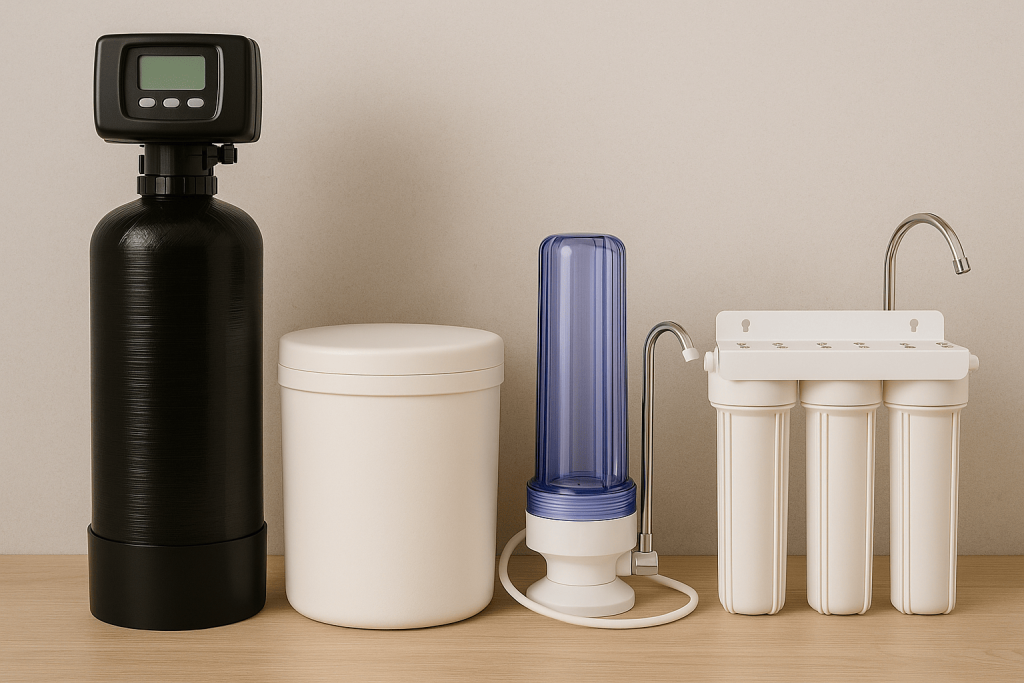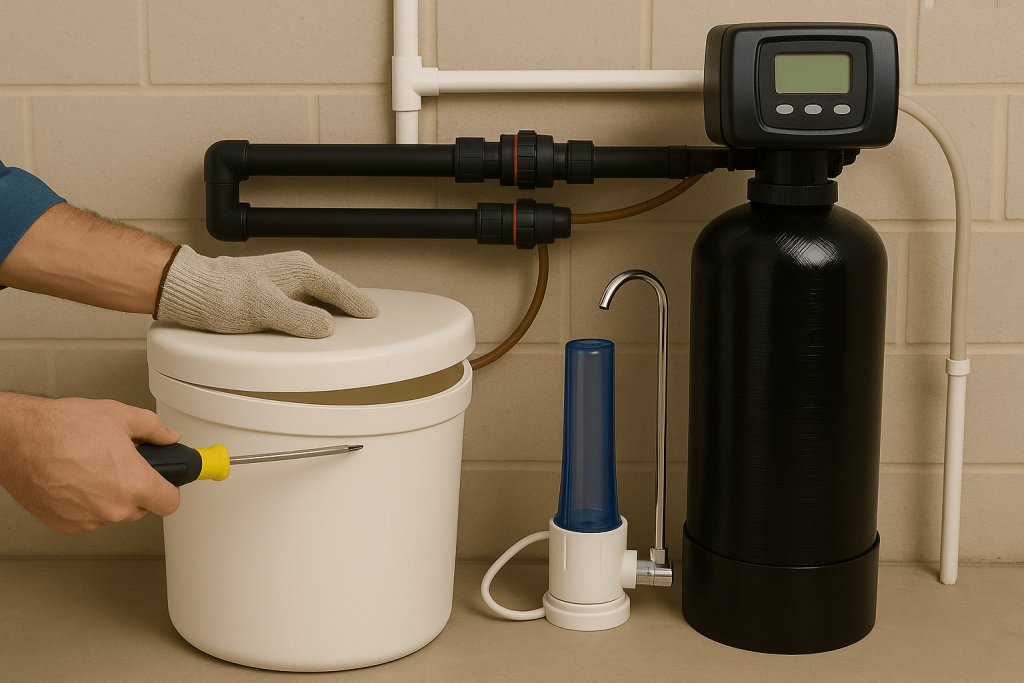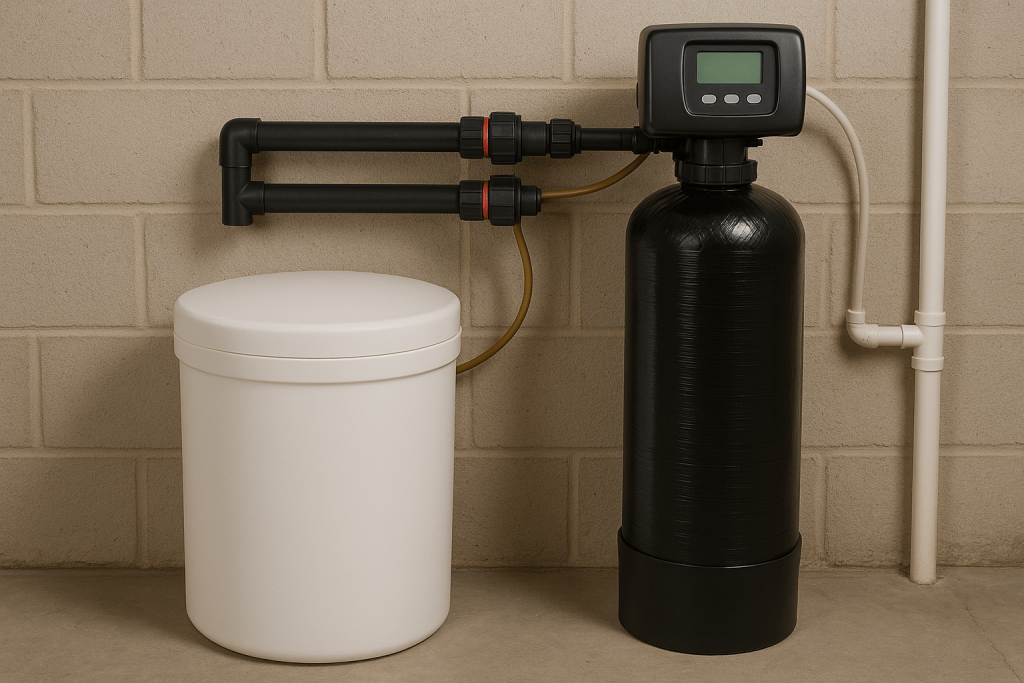Water quality isn’t something to take lightly, especially when it contains harmful contaminants like nitrates, sulfates, or arsenic. That’s where anion exchange water treatment comes in. This proven purification method helps ensure the water in your home, business, or facility is not only safe but optimized for taste, clarity, and performance.
In this blog, we’ll break down how anion exchange works, where it’s most useful, what types of contaminants it removes, and how to maintain your system for long-term results. We’ll also help you compare options and decide if this is the right solution for your water treatment needs.
What Is Anion Exchange Water Treatment?
Anion exchange water treatment is a filtration process designed to remove negatively charged contaminants (anions) from water. This is done by passing water through a special resin bed that exchanges unwanted anions like nitrate, sulfate, or arsenic with more benign ones such as chloride or hydroxide.
This process is highly efficient, especially in areas where groundwater contamination is an issue or where local municipal water sources contain persistent pollutants that pass through standard filtration methods.
Common Anions Removed by the Process:
- Nitrates
- Sulfates
- Arsenic
- Chromate
- Bicarbonates
- Fluoride
- Phosphates
How Does It Work? Step-by-Step Overview
Here’s how the anion exchange process works in a typical residential or commercial system:
- Water enters the System. Contaminated water flows into the treatment tank filled with anion exchange resin.
- Ion Exchange Occurs. The resin contains chloride or hydroxide ions. As water passes through, the harmful anions in the water are attracted to and bind with the resin, replacing the chloride ions.
- Clean Water Flows Out. The treated water exits the tank, now free of harmful anions and safe for use or consumption.
- Resin Regeneration Over time, the resin becomes saturated with contaminants. A salt solution (commonly sodium chloride or potassium chloride) is used to regenerate the resin and flush out the collected contaminants.
Benefits of Anion Exchange Water Treatment
Wondering if this method is worth the investment? Take a look at some of the top benefits of using anion exchange:
- Targeted Contaminant Removal Effectively removes specific harmful anions that other systems might miss
- Customizable Systems can be tailored for residential, commercial, or industrial needs
- Improved Taste and Safety: Eliminates substances that cause poor taste, odor, or health risks
- Regenerable Resin Long lifespan with periodic regeneration, making it cost-effective over time
- High Flow Rates Suitable for homes or facilities with high water usage
Comparison Table: Anion Exchange vs Other Water Treatment Methods

| Feature | Anion Exchange | Activated Carbon | Reverse Osmosis |
| Targets Anions (e.g. nitrates) | Yes | No | Yes |
| Removes Organic Compounds | No | Yes | Yes |
| Removes Sediment | No | No | Yes |
| Removes Taste and Odor | Yes | Yes | Yes |
| Regenerable Media | Yes | No | No |
| Operating Cost | Moderate | Low | High |
Common Uses and Applications
Residential Applications:
- Treating well water with high nitrate levels
- Improving drinking water taste and clarity
- Preventing scale and residue on appliances
- Reducing exposure to contaminants linked to health risks
Commercial and Industrial Applications:
- Water treatment in food and beverage manufacturing
- Pharmaceutical and laboratory-grade water purification
- Boilers and cooling towers that require ultra-pure water
- Pre-treatment for reverse osmosis systems
Maintenance Tips for Anion Exchange Systems

Like any water treatment solution, anion exchange systems require regular maintenance to stay effective. Here’s what you should know:
Monthly or Regular Tasks:
- Check salt levels in the brine tank (if applicable)
- Inspect valves and resin tanks for leaks or blockages
- Test water quality using a reliable test kit
Periodic Tasks:
- Regenerate the resin as needed (based on usage and contaminant load)
- Flush the system to remove buildup
- Replace or clean any pre-filters to protect the resin’s life
Is Anion Exchange Right for You?
Anion exchange is not a one-size-fits-all solution, but it excels in specific scenarios, especially when your primary concern is the removal of negatively charged ions like nitrate, sulfate, and arsenic.
You may benefit from anion exchange if:
- You rely on a private well with known nitrate contamination
- Your local water supply contains high levels of sulfates
- You are treating water for agricultural, industrial, or lab use
- You’ve tested your water and discovered specific anion contamination
Ready for Cleaner, Healthier Water? Let’s Make It Happen
If you’re ready to enjoy cleaner, safer, and better-tasting water, now is the perfect time to take action. Anion exchange water treatment is a powerful solution, but having the right experts by your side makes all the difference. At Pristine Water Softeners, we offer custom systems tailored to your specific water quality needs. Whether you’re dealing with high nitrate levels or simply want peace of mind, we’re here to help. Contact us today for a free consultation and discover how easy it is to get the water your home or business deserves.
